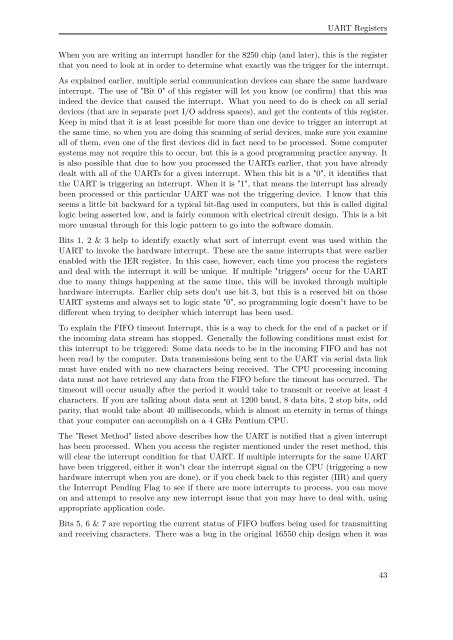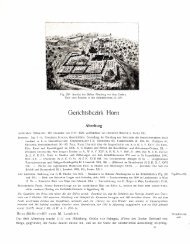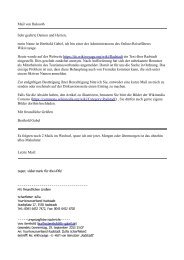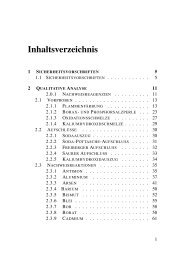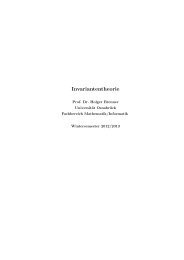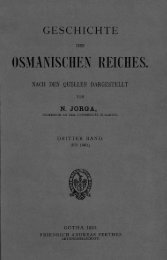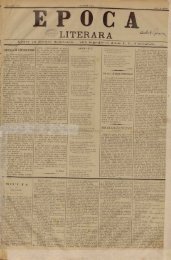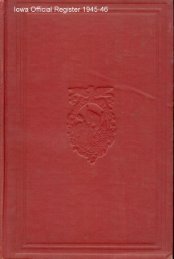Serial Programming - upload.wikimedia....
Serial Programming - upload.wikimedia....
Serial Programming - upload.wikimedia....
Create successful ePaper yourself
Turn your PDF publications into a flip-book with our unique Google optimized e-Paper software.
UART Registers<br />
When you are writing an interrupt handler for the 8250 chip (and later), this is the register<br />
that you need to look at in order to determine what exactly was the trigger for the interrupt.<br />
As explained earlier, multiple serial communication devices can share the same hardware<br />
interrupt. The use of "Bit 0" of this register will let you know (or confirm) that this was<br />
indeed the device that caused the interrupt. What you need to do is check on all serial<br />
devices (that are in separate port I/O address spaces), and get the contents of this register.<br />
Keep in mind that it is at least possible for more than one device to trigger an interrupt at<br />
the same time, so when you are doing this scanning of serial devices, make sure you examine<br />
all of them, even one of the first devices did in fact need to be processed. Some computer<br />
systems may not require this to occur, but this is a good programming practice anyway. It<br />
is also possible that due to how you processed the UARTs earlier, that you have already<br />
dealt with all of the UARTs for a given interrupt. When this bit is a "0", it identifies that<br />
the UART is triggering an interrupt. When it is "1", that means the interrupt has already<br />
been processed or this particular UART was not the triggering device. I know that this<br />
seems a little bit backward for a typical bit-flag used in computers, but this is called digital<br />
logic being asserted low, and is fairly common with electrical circuit design. This is a bit<br />
more unusual through for this logic pattern to go into the software domain.<br />
Bits 1, 2 & 3 help to identify exactly what sort of interrupt event was used within the<br />
UART to invoke the hardware interrupt. These are the same interrupts that were earlier<br />
enabled with the IER register. In this case, however, each time you process the registers<br />
and deal with the interrupt it will be unique. If multiple "triggers" occur for the UART<br />
due to many things happening at the same time, this will be invoked through multiple<br />
hardware interrupts. Earlier chip sets don't use bit 3, but this is a reserved bit on those<br />
UART systems and always set to logic state "0", so programming logic doesn't have to be<br />
different when trying to decipher which interrupt has been used.<br />
To explain the FIFO timeout Interrupt, this is a way to check for the end of a packet or if<br />
the incoming data stream has stopped. Generally the following conditions must exist for<br />
this interrupt to be triggered: Some data needs to be in the incoming FIFO and has not<br />
been read by the computer. Data transmissions being sent to the UART via serial data link<br />
must have ended with no new characters being received. The CPU processing incoming<br />
data must not have retrieved any data from the FIFO before the timeout has occurred. The<br />
timeout will occur usually after the period it would take to transmit or receive at least 4<br />
characters. If you are talking about data sent at 1200 baud, 8 data bits, 2 stop bits, odd<br />
parity, that would take about 40 milliseconds, which is almost an eternity in terms of things<br />
that your computer can accomplish on a 4 GHz Pentium CPU.<br />
The "Reset Method" listed above describes how the UART is notified that a given interrupt<br />
has been processed. When you access the register mentioned under the reset method, this<br />
will clear the interrupt condition for that UART. If multiple interrupts for the same UART<br />
have been triggered, either it won't clear the interrupt signal on the CPU (triggering a new<br />
hardware interrupt when you are done), or if you check back to this register (IIR) and query<br />
the Interrupt Pending Flag to see if there are more interrupts to process, you can move<br />
on and attempt to resolve any new interrupt issue that you may have to deal with, using<br />
appropriate application code.<br />
Bits 5, 6 & 7 are reporting the current status of FIFO buffers being used for transmitting<br />
and receiving characters. There was a bug in the original 16550 chip design when it was<br />
43


